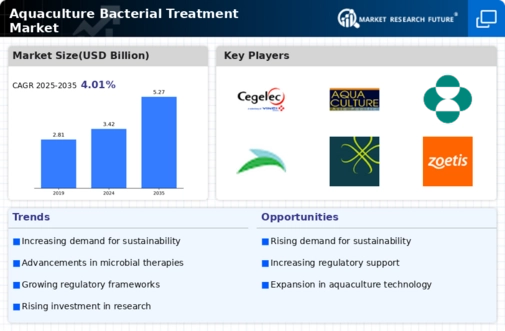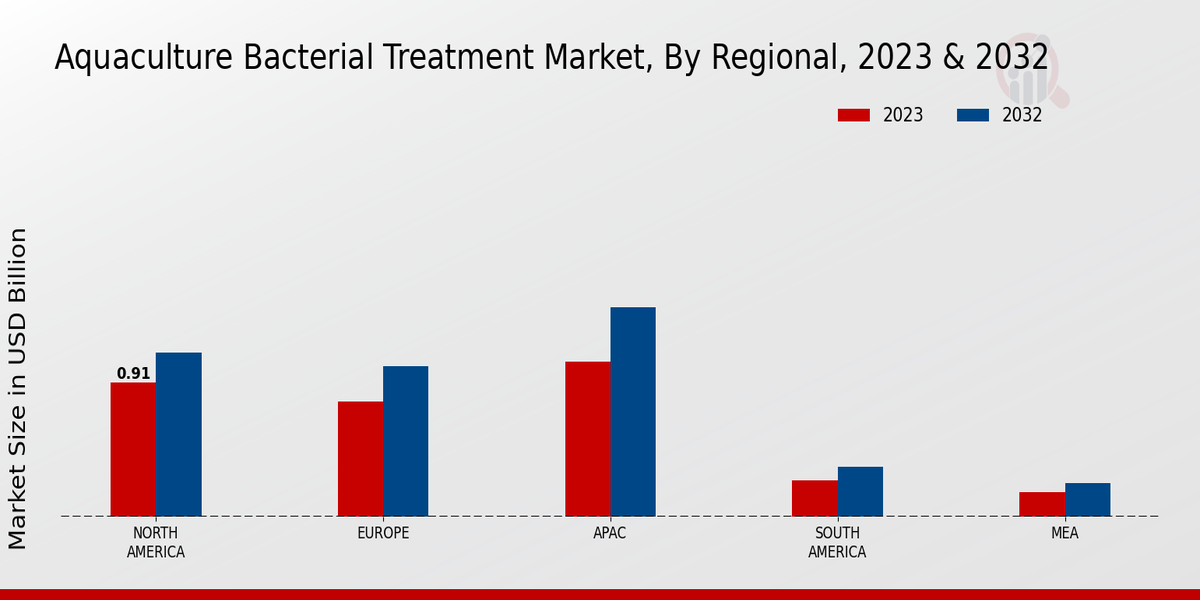Rising Incidence of Aquaculture Diseases
The Global Aquaculture Bacterial Treatment Market Industry is significantly influenced by the rising incidence of diseases affecting aquaculture species. Pathogens such as bacteria, viruses, and parasites pose substantial threats to fish health and productivity. The increasing prevalence of these diseases necessitates effective bacterial treatments to mitigate losses and ensure the sustainability of aquaculture operations. As the industry grapples with these challenges, the market for bacterial treatments is expected to expand, driven by the need for innovative solutions. This trend highlights the critical role of bacterial treatments in maintaining fish health and optimizing production efficiency.
Government Support and Regulatory Frameworks
Government support and regulatory frameworks are crucial drivers of the Global Aquaculture Bacterial Treatment Market Industry. Many governments are implementing policies that promote sustainable aquaculture practices and encourage the use of effective bacterial treatments. These initiatives often include funding for research and development, as well as incentives for aquaculture producers to adopt innovative solutions. Such support not only fosters industry growth but also ensures compliance with health and safety standards. As regulatory frameworks evolve, they are likely to create a conducive environment for the expansion of bacterial treatment solutions in aquaculture.
Increasing Demand for Sustainable Aquaculture
The Global Aquaculture Bacterial Treatment Market Industry is experiencing a surge in demand for sustainable aquaculture practices. As consumers become more environmentally conscious, aquaculture operations are increasingly adopting eco-friendly methods to reduce their ecological footprint. This shift is likely to drive the adoption of bacterial treatments that promote fish health and minimize disease outbreaks. The market is projected to reach 3.42 USD Billion in 2024, reflecting a growing recognition of the need for sustainable practices in aquaculture. The emphasis on sustainability not only enhances product quality but also aligns with global efforts to ensure food security and environmental protection.
Technological Advancements in Treatment Solutions
Technological advancements are playing a pivotal role in shaping the Global Aquaculture Bacterial Treatment Market Industry. Innovations in treatment methodologies, such as the development of probiotics and biosecurity measures, are enhancing the efficacy of bacterial treatments. These advancements not only improve the health of aquaculture species but also contribute to higher yields and reduced mortality rates. As the industry embraces these technologies, the market is anticipated to grow, with a projected CAGR of 4.02% from 2025 to 2035. The integration of cutting-edge solutions underscores the importance of research and development in addressing the evolving challenges faced by aquaculture.
Growing Global Population and Food Security Concerns
The Global Aquaculture Bacterial Treatment Market Industry is significantly impacted by the growing global population and the associated food security concerns. As the demand for seafood continues to rise, there is an increasing need for efficient aquaculture practices that can meet this demand sustainably. Bacterial treatments play a vital role in enhancing fish health and productivity, thereby contributing to food security. With projections indicating that the market could reach 5.27 USD Billion by 2035, the emphasis on efficient aquaculture practices is likely to drive the adoption of bacterial treatments, ensuring a stable supply of seafood for the growing population.





















